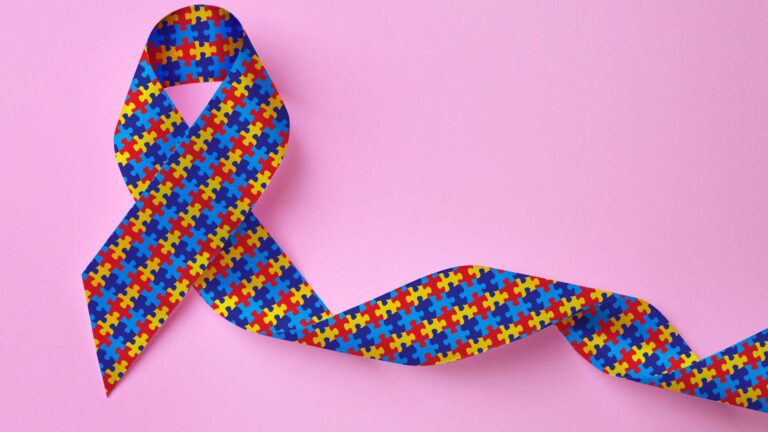Autism-friendly environments: We are all affected by our surroundings. There are gloomy days where we don’t feel welcomed and wonderful days where we feel like the world has our back. For individuals with autism spectrum disorder (ASD), the environment can be their best friend or worst enemy. Supportive surroundings can empower individuals with autism to thrive, develop skills, and lead fulfilling lives.
The environment in which a child with autism grows up can significantly influence their development and well-being. It encompasses various elements, such as physical spaces, sensory stimuli, social interactions, and daily routines. Individuals with autism often have sensory sensitivities and differences in how they perceive the world around them. What may seem pleasant for neurotypical individuals can be extremely difficult to process for people with ASD.
Recently, many have noticed that a big part of autism advocacy is understanding and changing the environment to create a more inclusive world. Autism awareness is critical to everything we do at ABA Centers of America: helping people on the spectrum feel empowered and capable of handling anything. Understanding how environmental factors can lead to success or get in their way can be the difference.
In this article, we will delve into the impact of the environment on autism, discuss positive and negative reactions that can arise, and provide tips for parents and caregivers to create autism-friendly environments.
The Impact of the Environment on Autism
The world is a busy place, and a lot of information is conveyed contextually through experience. Individuals with autism struggle with this task since how they process information is different. They may have heightened or diminished sensory sensitivities, difficulties understanding “the big picture,” filtering relevant or irrelevant information, understanding the emotions of others, planning, organizing, or prioritizing between tasks, and communicating their needs.
These factors add up to a sense of being overwhelmed and misunderstood, surrounded by stimuli they find harsh, and not being able to focus on anything for too long before something else causes anxiety. Despite the challenges, many individuals with autism manage to excel. We will address the coping mechanisms and ways of improving the world and its surroundings below.
Positive Aspects of Autism-Friendly Environments
A well-designed environment can have profoundly positive effects on individuals with autism:
1. Sensory-Friendly Spaces: Individuals with autism may have heightened sensory sensitivities. Loud noises, bright lights, crowds of people, physical touch, and unfamiliar food can have adverse effects. Creating sensory-friendly spaces with soft lighting, comfortable furniture, and soothing colors can help reduce sensory overload and anxiety.
2. Structured Routines: Predictability and routine can provide security for individuals with autism. Knowing which stimuli to expect will make them better prepared to overcome difficulties. Consistent daily schedules and clear transitions help them navigate their environment with ease.
3. Visual Supports: Preparation is essential to making individuals with ASD comfortable. Visual aids, such as schedules, charts, and social stories, can assist individuals with autism in understanding and anticipating events, expectations, and social cues.
4. Inclusive Education: Schools that provide inclusive education environments with specialized support can foster social interaction, skill development, and a sense of belonging for students with autism. Before enrolling someone on the spectrum in an institution, ask what aids or accommodations they make to help them.
5. Empathy and Acceptance: Environments that promote empathy, acceptance, and understanding of neurodiversity encourage positive social interactions and relationships among peers. Autism awareness has come a long way, and some people know how to ensure the growth of individuals on the spectrum while respecting their autonomy and dignity.
Negative Reactions to an Unsupportive Environment
On the other hand, an unsupportive environment can lead to adverse reactions for individuals with autism:
1. Sensory Overload: Due to difficulties with sensory processing, harsh stimuli can be a source of great anguish. Very bright spaces and loud volumes are just some of the common culprits. Still, physical touch, close talking, forcing food choices, and other overwhelming stimuli can lead to sensory overload, causing distress and meltdowns.
2. Social Isolation: Lack of understanding and acceptance in the environment can lead to social isolation, negatively impacting self-esteem and mental health. There is a harmful misconception that individuals with ASD don’t mind being alone. With higher rates of depression in the population, we know this to be false. Making an effort to include individuals with ASD is critical to ensuring their happiness.
3. Communication Barriers: Environments that do not accommodate different communication styles may hinder effective communication, leading to frustration and misunderstandings.
4. Unpredictable Changes: Sudden changes in routines or environments can be particularly challenging for individuals with autism, causing anxiety and confusion.
5. Bullying and Stigmatization: Negative attitudes and lack of awareness about autism can result in bullying, further isolating individuals and damaging their emotional well-being. Effective education about neurodiversity can bridge the gaps of compassion and understanding. If you see someone picking on an individual with ASD, step in or contact an administrator!
Tips for Creating a Supportive Environment
1. Understand Sensory Sensitivities: Learn about your child’s sensory sensitivities and preferences. Create sensory-friendly spaces and provide sensory tools like noise-canceling headphones or fidget toys.
2. Provide Clear Communication: Establishing an easy-to-follow daily schedule can help people on the spectrum get in their comfort zone. Use clear and concise language. Use visual supports like pictures and gestures to enhance communication.
3. Advocate for Inclusion: Collaborate with schools to ensure inclusive education for your child. Encourage educators and peers to learn about autism to create a more accepting atmosphere. Educate family members, friends, and peers about autism to promote understanding and empathy.
4. Offer Choices: Allow your child to make choices within structured parameters. This method can empower them and provide a sense of control.
5. Teach Coping Strategies: Teach your child coping strategies to manage sensory overload and anxiety, such as deep breathing exercises or finding a quiet space.
Taking Advantage of Autism-Friendly Environments
While the environment can present challenges, it can also be a valuable resource for individuals with autism:
1. Identify Strengths: Creating autism-friendly environments starts with observing your child’s interests and strengths. Design the environment to facilitate engagement in these areas, fostering skill development and self-confidence.
2. Transition Planning: As individuals with autism grow, prepare for transitions such as moving to a new school, entering adulthood, or starting a new routine. Gradual changes and preparation can ease anxiety.
3. Use Special Interests: Incorporate your child’s unique interests into learning and daily routines. Special interests can be powerful motivators for engagement and learning.
4. Community Engagement: Explore local community resources, such as support groups, sensory-friendly events, and recreational activities tailored to individuals with autism. Get involved in advocacy efforts to promote policies and initiatives that support more autism-friendly environments. Positive changes at a systemic level can create a more inclusive society.
5. Nature and Outdoor Activities: Spending time in nature can provide sensory experiences and opportunities for physical activity. Nature’s calming influence can also alleviate stress.
6. Technology and Assistive Devices: Leverage technology and assistive devices that cater to your child’s needs. These tools can aid communication, learning, and skill development.
ABA Centers of America and Creating a Positive Environment
At ABA Centers of America, we can give individuals on the spectrum the tools they need to navigate their lives and feel comfortable in more places. We accomplish this through Applied Behavior Analysis (ABA), the best therapy available for teaching individuals with autism skills that can guarantee their success in many areas. From daily hygiene to communication, attention, academic performance, or something as simple as taking turns, we can help.
ABA therapy is individualized to meet the unique needs of individuals, ensuring that whatever in their environment they struggle with can be overcome. Additionally, we are proud members of the autism awareness community and organize many local events and outings to foster a sense of belonging and joy.
Get in touch online or call 844-923-4222 to discover how to create autism-friendly environments together and improve lives.







